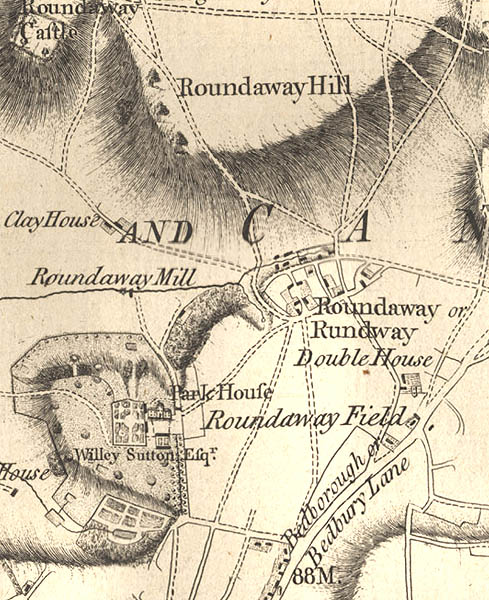Ni15 John Nicholas
Ni15 John Nicholas, Esquire of Roundway, was the son of John
Nicholas (Ni16) and Alice Enoch
(En16), daughter and coheiress of Thomas Enoch
| Born: about 1455
Married: first Alice Cove, daughter of Richard Cove of the Ley, Wiltshire. second Agnes Gore, daughter and coheiress of John Gore of Hinton, Wiltshire. Died: 1502 John Nicholas and Agnes Gore had children:
|
As a direct male descendant of the Nicholas Families of Alcannings
and Roundway he was entitled to bear the Nicholas Coat of Arms, as were
his sons and theirs etc.
Motto: Vigilantia et constantia As seen by maj. Griffin Nicholas the original crest for the Roundway branch is "On a chapeau azure ... owl rising or" except for the head of the family, for which "On a chapeau gules ... owl rising or" applies. As the Roundway branch is the senior branch this specialty will only occur in that line and only for the most senior branch. Assuming that Maj. Griffin Nicholas was correct about other more senior lines being without male heir, his line would be entitled to a gules chapeau, if not the Barony "de la Roch of Bromham." The Visitation of 1565
shows The arms arms as quartered, 1 and 4 being "Argent, on a chevron between three ravens Sable,
two lions rampant respecting each other of the field;
2 Gules, a chevron Argent between three garbs Or; 3, Azure, three roaches naiant in pale Argent,
impaling Gyronny of eight Or and Azure, a canton Ermine (Okden)
|
| Map of Roundway dating 1773. It is difficult to know how to write about
the parish of Roundway, which was only created in 1894. There is a small
Roundway village that was once in Bishops Cannings’ parish and a very strangely
shaped area of land that surrounds the town of Devizes to the north, east
and south of it. Only a narrow isthmus of land connects the northern and
southern parts of the parish and both these areas contain domestic and
commercial buildings that really belong to the town of Devizes. It is likely
that most people living in the parish, other than those actually in Roundway
village consider that they live in the town of Devizes. The parish looks
as though it was created by a bureaucrat who was having a very bad day.
The village is about one mile to the north east of Devizes and is remarkable in having had no church or chapel of ease, no school and having lost its manor house. There are however a complex of roads that led to Bromham, Heddington, Rowde, Devizes and Potterne and it is this complex that suggests the village was once larger than it is today. In the parish itself the highest ground is in the north-east, Roundway Hill at 242 metres and the lowest in the south, at about 116 metres. Roundway Park lies between the village and Devizes, which are connected by Quaker’s Walk passing through the grounds. Mother Anthony’s Well lies at the foot of Roundway Hill, close to Roman settlement in Bromham parish while Drew’s Pond in the south is now part of Devizes, being in the area of Wick that Roundway lost in the late 20th century. |
 |